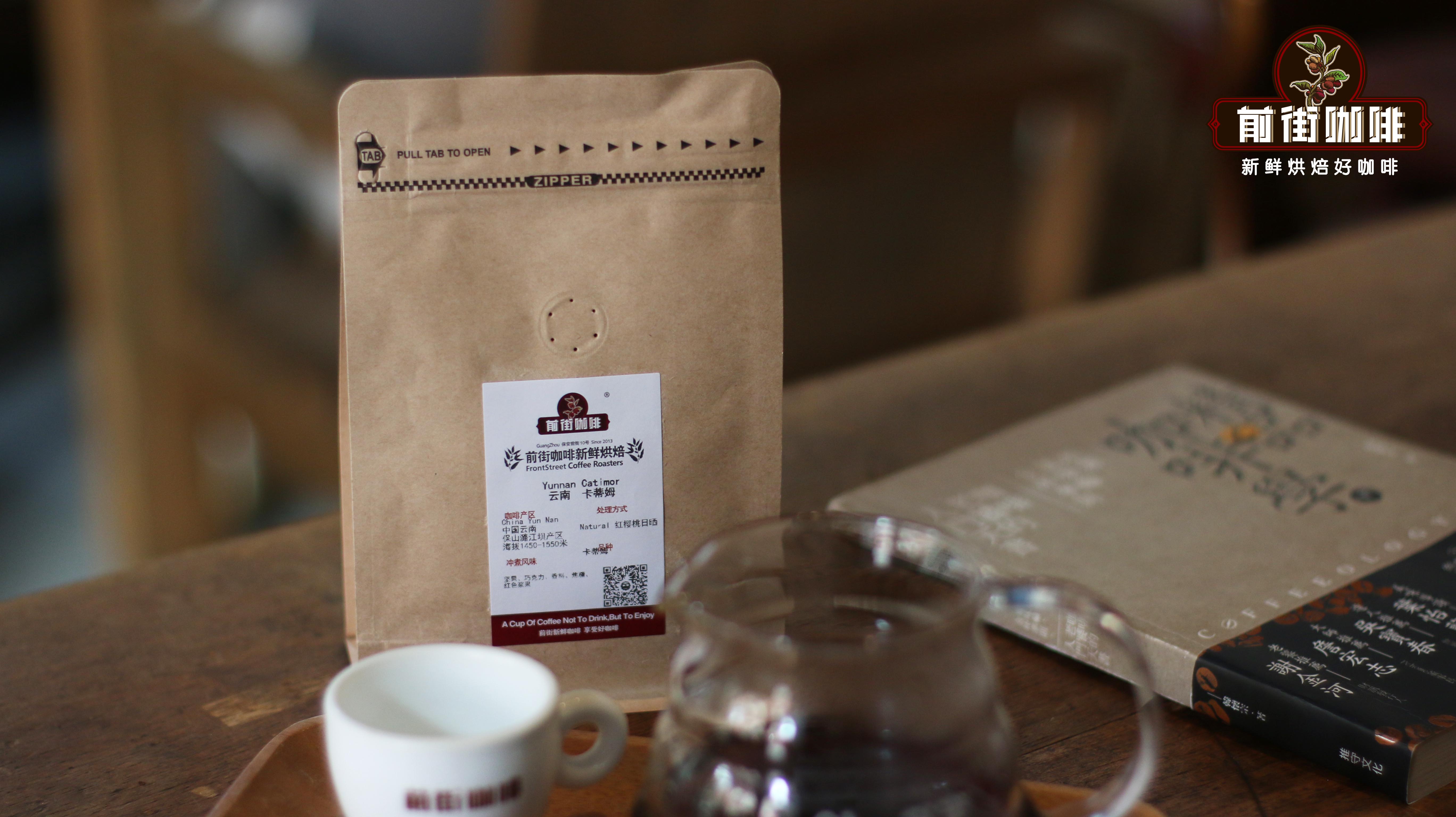Description of the flavor and taste of Katim coffee
Follow the caf é (Wechat official account vdailycom) and found that Beautiful Cafe opened a small shop of its own.
After shelling, there are 18.5kg raw beans of different sizes, many chopped beans, adzuki beans and bad beans, but there are still a lot of defective beans after drying, so we hand-picked them on the spot and finally left 9 kilograms of qualified ones-- and most of the morning has passed, of course, if it is used to make instant coffee or general commercial beans, high-yield catimor is a good choice. But if you want to find specialty coffee in Yunnan, then the old variety of Ironpika has become the first choice because of its congenital excellent genes. Therefore, this trip to Yunnan also followed the trail of the old varieties. But the reality is really cruel. Before going, Brother Zou told me that there was an old variety in his relative's house, but what he saw excitedly was a crazy growing coffee forest, which belonged to his aunt because his aunt was not old enough to plant and renovate-- so these old varieties survived, but the aunt was unable to manage it alone, so he left the tree to grow naturally and pick some fruit when it matured to trace its roots. Typica, which originated from Ethiopia, is the earliest original species of coffee. Bourbon is a variety of typica. Both of them have rich aroma and excellent taste performance, and they also belong to very high quality varieties in Arabica. It is said that the coffee tree species that was first introduced into Zhukula in Yunnan is typica. When coffee was planted on a large scale in Baoshan area in the 1950s, it was also typica and bourbon. But the problem is that although these two varieties have excellent taste, they are not resistant to diseases and insect pests, are prone to leaf rust, and the yield per mu is relatively low, so corresponding to this, there are "new varieties".

Colombia is the biggest harvest of the new variety of Katim, and directly named the improved Katim as "Colombia" Katim and Kaddura are their two main varieties, with a proportion of about 6:4. These were told by my Colombian colleagues during the 2010 World Expo as a Chinese coffee consultant in Costa Rica. So those friends who flip through the coffee beans printed in Supermo bags and say how Katim in Yunnan had no flavor last time, please pay more attention to the coffee in Yunnan.
Catimor: in 1959, the Portuguese mixed Brazilian Kaddura and Timo to develop a disease-resistant Katim / Katimo, which is now an important variety of commercial beans.
Growing period
Yunnan small grain coffee 3-year-old 4-year-old fruit tree.
Coffee is a short-day plant. Coffee has the characteristics of multiple flowering and concentrated florescence. The florescence of small seed coffee in Yunnan is from February to July, and the flowering period is from March to May. The flowering of coffee is greatly affected by climate, especially rainfall and temperature. Coffee flowers have a short life span of only 2-3 days. Small seed coffee usually opens at 3: 5 in the morning and blooms from 5 to 7 o'clock.
The development time of coffee fruit is longer. It takes 8 to 10 months for the fruit of small seed coffee to mature, usually from October to December of the year. Rainfall has a great influence on fruit development, and climatic conditions directly affect fruit development.
The new leaves at the tips of the branches and leaves above are copper, which is Tiebika growing coffee trees. Tibica is an old variety of Arabica species. It is also known as Kona Hawaii and the Blue Mountains of Jamaica. In the vast expanse of Katim, it is easy to recognize. After careful observation, you will find that each species has its own appearance, Katim's leaves are hanging down, the tree shape seems to be wearing a cloak. Tiebika, on the other hand, has upward branches and new leaves on the top of the tree.
Along the way, most of the varieties planted in Yunnan are Katim, which is a hybrid of Kaddura and Robusta, a branch of the bourbon line in the Arabica species. The reason for planting this variety is that Katim has the Robusta gene, so it is better than a single old variety in disease resistance, and the yield is better, and the yield is lower than that of the delicate old variety. Farmers naturally prefer to grow Katim, so now there has been a wave of Katim in Yunnan.
Important Notice :
前街咖啡 FrontStreet Coffee has moved to new addredd:
FrontStreet Coffee Address: 315,Donghua East Road,GuangZhou
Tel:020 38364473
- Prev

Characteristics of Katim species in Yunnan
Following caf é comments (official Wechat account vdailycom) found that the Cafe Beautiful Cafe opened a small shop of its own characteristics of Yunnan Katim species with the in-depth development of Yunnan coffee industry, the rising demand of the domestic coffee market and the efforts of the government and enterprises, Yunnan coffee will certainly usher in a new period of development. Bourbon (bourbon): this variety is derived from the iron pickup and was created by the French.
- Next

Description of the Flavor and Taste of Yunnan Katim Coffee Bean introduction to the characteristics and producing area ranking of Yunnan small Grain Coffee
Flavor: soft berries slightly sour, balanced and lively, flower and fruit aroma, tree aroma, Huigan strong Katim CIFC7963 (F6) is widely popularized and planted in Dehong, Baoshan, Pu'er, Xishuangbanna, Lincang, Wenshan and Yuxi in Yunnan Province, as well as Panzhihua in Sichuan Province and neighboring Myanmar.
Related
- Detailed explanation of Jadeite planting Land in Panamanian Jadeite Manor introduction to the grading system of Jadeite competitive bidding, Red bid, Green bid and Rose Summer
- Story of Coffee planting in Brenka region of Costa Rica Stonehenge Manor anaerobic heavy honey treatment of flavor mouth
- What's on the barrel of Blue Mountain Coffee beans?
- Can American coffee also pull flowers? How to use hot American style to pull out a good-looking pattern?
- Can you make a cold extract with coffee beans? What is the right proportion for cold-extracted coffee formula?
- Indonesian PWN Gold Mandrine Coffee Origin Features Flavor How to Chong? Mandolin coffee is American.
- A brief introduction to the flavor characteristics of Brazilian yellow bourbon coffee beans
- What is the effect of different water quality on the flavor of cold-extracted coffee? What kind of water is best for brewing coffee?
- Why do you think of Rose Summer whenever you mention Panamanian coffee?
- Introduction to the characteristics of authentic blue mountain coffee bean producing areas? What is the CIB Coffee Authority in Jamaica?

